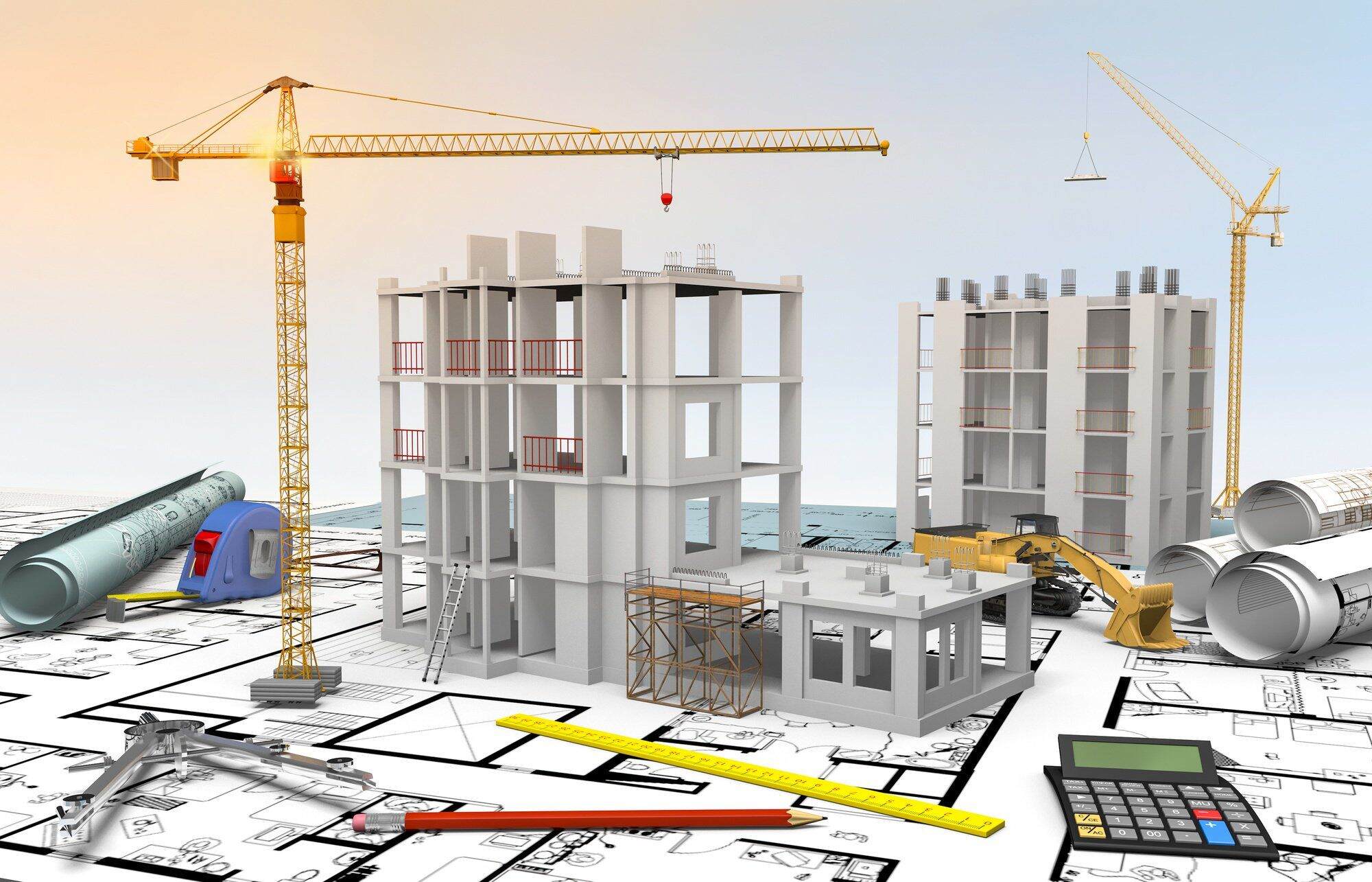Home>diy>Planning & Engineering>What Is The Future Scope Of Civil Engineering


Planning & Engineering
What Is The Future Scope Of Civil Engineering
Modified: January 23, 2024
Discover the future scope of civil engineering and the crucial role of planning engineering in shaping the infrastructure of tomorrow. Gain valuable insights and explore exciting opportunities in this dynamic field.
(Many of the links in this article redirect to a specific reviewed product. Your purchase of these products through affiliate links helps to generate commission for Storables.com, at no extra cost. Learn more)
Introduction
The field of civil engineering has always been at the forefront of shaping the world we live in. From the construction of towering skyscrapers to the development of intricate transportation systems, civil engineers play a crucial role in designing and constructing the physical infrastructure that supports modern society.
Over the years, the field of civil engineering has witnessed remarkable advancements driven by technological innovation. These advancements have not only transformed the way we build structures but also paved the way for more sustainable and environmentally friendly construction practices.
In this article, we will explore the future scope of civil engineering, with a focus on the new technologies, sustainable practices, and advancements in the field. We will also delve into the role of artificial intelligence (AI) in revolutionizing civil engineering and the challenges and opportunities that lie ahead.
So, let’s dive into the exciting world of civil engineering and discover what the future holds for this dynamic field.
Key Takeaways:
- Embracing new technologies like BIM, 3D printing, and IoT is revolutionizing civil engineering, making construction processes more efficient, cost-effective, and sustainable.
- Civil engineers have the opportunity to innovate and shape a resilient, sustainable future by addressing challenges such as climate change, urbanization, and workforce development.
Read more: What Is Civil Engineering Major
New Technologies in Civil Engineering
Civil engineering has always been a field that embraces new technologies to improve efficiency, safety, and sustainability. In recent years, several cutting-edge technologies have emerged that are reshaping the way civil engineers approach projects. Let’s explore some of these technologies:
- Building Information Modeling (BIM): BIM is a digital representation of a building or infrastructure project that incorporates detailed geometric and parametric information. It allows engineers, architects, and contractors to collaborate seamlessly, enhancing communication and reducing errors. BIM also enables simulations and analysis, facilitating better decision-making throughout the construction process.
- 3D Printing: 3D printing technology is revolutionizing construction by automating the process of creating complex structures. It enables architects and engineers to create intricate designs and rapidly prototype them, reducing construction time and costs. Additionally, 3D printing allows for the use of sustainable materials and minimizes waste generation.
- Drones: Aerial drones equipped with high-resolution cameras and LiDAR (Light Detection and Ranging) sensors have become invaluable tools for civil engineers. They provide accurate and up-to-date visual data of construction sites, allowing for efficient site assessment, progress monitoring, and inspections. Drones can also improve safety by conducting risky inspections without risking human lives.
- Internet of Things (IoT): The IoT has found its way into civil engineering, enabling the development of smart infrastructure. Sensors embedded in structures collect real-time data on parameters like temperature, humidity, and stress levels. This data helps engineers monitor the health of the infrastructure, detect potential issues, and plan maintenance more efficiently.
- Virtual Reality (VR) and Augmented Reality (AR): VR and AR technologies have transformed the design and visualization process by creating immersive experiences. Civil engineers can use VR and AR to simulate and explore proposed designs, detect clashes or conflicts, and communicate ideas effectively with stakeholders. These technologies also facilitate training for construction workers, enhancing safety and reducing onsite errors.
The integration of these technologies into civil engineering projects is revolutionizing the industry, making construction processes more efficient, cost-effective, and sustainable. Civil engineers who embrace these technologies gain a competitive edge and are better equipped to tackle the challenges of the future.
Sustainable Construction Practices
As the world faces the challenges of climate change and environmental degradation, sustainable construction practices have become a top priority for the civil engineering industry. The aim is to minimize the environmental impact of construction projects and create structures that are energy-efficient, resource-conscious, and environmentally friendly. Here are some key sustainable construction practices:
- Green Building Design: Green building design focuses on reducing the environmental footprint of structures. This involves optimizing energy efficiency, utilizing renewable energy sources, implementing water conservation strategies, and incorporating sustainable materials. The use of technologies such as energy-efficient HVAC systems, solar panels, rainwater harvesting, and recycled materials are key components of green building design.
- Waste Management and Recycling: Proper waste management and recycling are essential for sustainable construction. This involves minimizing waste generation, segregating waste materials on-site, and recycling materials whenever possible. Reusing materials, such as reclaimed wood or repurposed construction materials, also helps reduce the demand for new resources and minimizes the carbon footprint of construction projects.
- Water Conservation: Water scarcity is a growing concern, making efficient water management critical in construction projects. Designing structures with water-efficient fixtures, implementing rainwater harvesting systems, and using recycled water for non-potable purposes are some ways to conserve water. Proper irrigation and landscaping techniques can also minimize water usage in outdoor spaces.
- Energy Efficiency: Incorporating energy-efficient technologies and practices is crucial for sustainable construction. This includes efficient insulation, high-performance windows, LED lighting, and optimizing the building’s orientation for natural light and ventilation. Energy monitoring systems can also be installed to track and reduce energy consumption over time.
- Life Cycle Assessment (LCA): Conducting a life cycle assessment enables engineers to evaluate the environmental impact of a structure throughout its entire lifespan. This assessment considers factors such as production, construction, operation, and eventual demolition and disposal. By analyzing the life cycle impacts, engineers can make informed decisions to minimize environmental harm.
By adopting sustainable construction practices, civil engineers not only contribute to preserving the environment but also benefit from long-term cost savings, improved energy efficiency, and enhanced occupant comfort. It is essential for the industry to prioritize sustainability to create a built environment that aligns with our environmental goals.
Advancements in Structural Engineering
Structural engineering is a fundamental aspect of civil engineering that focuses on the design, analysis, and construction of safe and resilient structures. In recent years, significant advancements have been made in this field, revolutionizing the way structures are designed and constructed. Here are some notable advancements in structural engineering:
- High-Performance Materials: The development of high-performance materials has led to stronger and more durable structures. Advanced materials, such as fiber-reinforced concrete, carbon fiber composites, and high-strength steel alloys, offer improved resistance to environmental factors, increased load-bearing capacity, and reduced maintenance requirements.
- Structural Health Monitoring: Structural health monitoring (SHM) involves using sensors and monitoring systems to assess the condition and performance of structures in real-time. This technology allows engineers to detect and evaluate structural issues, such as cracks, deformation, or structural degradation. It enables proactive maintenance and enhances the safety and reliability of structures.
- Seismic Design and Retrofitting: Given the increasing occurrence of seismic events, seismic design and retrofitting techniques have advanced significantly. Engineers now have access to advanced analytical tools and software that simulate seismic behavior and optimize design parameters. Retrofitting techniques, such as base isolation and dampers, have also been developed to enhance the seismic resilience of existing structures.
- Structural Analysis and Design Software: Computational tools and software have revolutionized the way structural analysis and design are conducted. These software programs can simulate complex structural behaviors, allowing engineers to optimize designs, assess performance under different load conditions, and ensure compliance with safety codes and regulations. The use of cloud-based platforms also enables collaborative and remote work.
- Prefabrication and Modular Construction: Prefabrication and modular construction techniques have gained popularity in recent years. These approaches involve fabricating building components off-site and assembling them at the construction site, reducing construction time, costs, and waste generation. Prefabrication also allows for better quality control and enhances safety on-site.
These advancements in structural engineering have not only improved the safety, durability, and efficiency of structures but have also opened up new possibilities for innovative designs. Structural engineers continue to explore and implement these advancements to create structures that can withstand a wide range of challenges and contribute to a sustainable built environment.
Stay updated with the latest technology and sustainable practices in civil engineering. Specialize in areas like environmental engineering, transportation, or structural design to stay competitive in the future job market.
Role of Artificial Intelligence in Civil Engineering
Artificial Intelligence (AI) is revolutionizing various industries, and civil engineering is no exception. AI has the potential to transform the way civil engineers plan, design, and manage infrastructure projects. Here are some key areas where AI is making a significant impact:
- Design Optimization: AI algorithms can analyze large amounts of data and generate optimized designs based on specified criteria. By automating the design process, AI can create more efficient and cost-effective structures. AI can also consider various factors, such as materials, loads, and environmental conditions, to produce designs that are safe, sustainable, and precise.
- Predictive Analytics: AI can analyze historical data and use machine learning algorithms to predict potential issues and performance outcomes. This enables engineers to anticipate risks, plan proactive maintenance, and optimize construction schedules. Predictive analytics can also improve resource allocation, reducing costs and maximizing efficiency.
- Construction Management: AI-powered systems can monitor construction sites using data from various sources such as drones, sensors, and cameras. This allows for real-time monitoring of progress, quality, and safety compliance. AI can also automate tedious tasks like progress tracking, material management, and scheduling, streamlining project management processes.
- Risk Assessment and Safety: AI can evaluate project risks and identify potential hazards in construction sites. By analyzing data from sensors, drones, and historical databases, AI systems can detect unsafe conditions and provide early warnings. This contributes to a safer working environment for construction workers and reduces accidents.
- Infrastructure Maintenance: AI can play a vital role in infrastructure maintenance. By analyzing sensor data and conducting condition assessments, AI can predict maintenance needs and prioritize repairs. This proactive approach helps extend the lifespan of structures, reduces maintenance costs, and ensures the safety and reliability of critical infrastructure.
The implementation of AI in civil engineering not only enhances efficiency but also allows engineers to make informed decisions based on data-driven insights. It enables optimization, reduces risks, improves safety, and promotes sustainability. While AI may never replace human expertise in civil engineering, it is an indispensable tool that empowers engineers to tackle complex challenges and deliver innovative solutions.
Read more: What Is A Civil Engineering Technician
Future Challenges and Opportunities in Civil Engineering
The field of civil engineering is rapidly evolving, presenting both challenges and opportunities for professionals in the industry. As we look to the future, here are some key challenges and opportunities that civil engineers will encounter:
- Climate Change and Resilient Infrastructure: Climate change poses significant challenges for civil engineers as they must design and construct infrastructure capable of withstanding more frequent extreme weather events. This includes developing resilient structures, implementing sustainable practices, and integrating climate change considerations in planning and design processes. It also presents opportunities for innovation in renewable energy, green infrastructure, and adaptation strategies.
- Urbanization and Infrastructure Demands: The rapid growth of urban areas places immense pressure on infrastructure systems. Civil engineers must meet the increasing demands for transportation, water supply, energy, and waste management while considering factors like population growth, limited resources, and environmental impacts. This creates opportunities for developing smart cities, efficient transportation systems, and sustainable infrastructure solutions.
- Technological Advancements: Rapid technological advancements, such as AI, robotics, and digitalization, offer exciting opportunities for civil engineers. Embracing these technologies can improve efficiency, accuracy, and safety in design, construction, and maintenance processes. However, the challenge lies in staying updated and adapting to the ever-changing technological landscape.
- Sustainability and Green Construction: The need for sustainable construction practices will continue to grow as society recognizes the importance of reducing environmental impact. Civil engineers have the opportunity to promote and implement sustainable techniques, use eco-friendly materials, and design energy-efficient structures. Building green infrastructure and promoting circular economy principles are also avenues for creating a more sustainable future.
- Workforce Development: The aging workforce in civil engineering poses a challenge in terms of succession planning and knowledge transfer. Developing the skills of the next generation of civil engineers is crucial to address the complex challenges of the future. Opportunities lie in mentoring programs, educational initiatives, and embracing diversity to foster a talented and inclusive workforce.
While these challenges may seem daunting, they present opportunities for civil engineers to innovate, collaborate, and make a positive impact on society. Tackling these challenges requires a multidisciplinary approach, embracing new technologies, and fostering sustainable practices. By staying ahead of the curve and adapting to evolving trends, civil engineers can shape a resilient, sustainable, and prosperous future.
Conclusion
The future of civil engineering is filled with exciting possibilities, driven by technological advancements, sustainable practices, and innovative solutions. As the world continues to evolve, civil engineers will play a crucial role in designing and constructing the infrastructure that supports our modern society.
The integration of new technologies, such as Building Information Modeling (BIM), 3D printing, drones, Internet of Things (IoT), and virtual reality (VR), is revolutionizing the way civil engineers approach projects. These technologies enhance efficiency, collaboration, and decision-making, leading to more streamlined and cost-effective construction processes.
Sustainability is another key focus area for civil engineering in the future. Green building design, waste management, water conservation, energy efficiency, and life cycle assessment are just a few of the sustainable practices that will drive the industry forward. By prioritizing sustainability, civil engineers can create structures that are environmentally friendly, energy-efficient, and capable of withstanding the challenges posed by climate change.
Artificial Intelligence (AI) is poised to play a significant role in civil engineering, empowering engineers in design optimization, predictive analytics, construction management, risk assessment, and infrastructure maintenance. By harnessing the power of AI, civil engineers can make data-driven decisions, enhance safety, and optimize resource allocation.
While civil engineering faces challenges such as climate change, urbanization, technological advancements, sustainability, and workforce development, these challenges also present exciting opportunities. Civil engineers have the chance to address these challenges head-on, fostering innovation, collaboration, and sustainable practices.
In conclusion, the future scope of civil engineering is promising and dynamic. By embracing new technologies, sustainable practices, and innovative approaches, civil engineers can shape a built environment that is resilient, environmentally friendly, and enhances the quality of life for future generations. The key is to stay adaptable, continue learning, and collaborate with stakeholders to create a brighter future through civil engineering.
Frequently Asked Questions about What Is The Future Scope Of Civil Engineering
Was this page helpful?
At Storables.com, we guarantee accurate and reliable information. Our content, validated by Expert Board Contributors, is crafted following stringent Editorial Policies. We're committed to providing you with well-researched, expert-backed insights for all your informational needs.















0 thoughts on “What Is The Future Scope Of Civil Engineering”